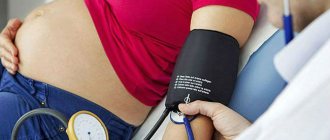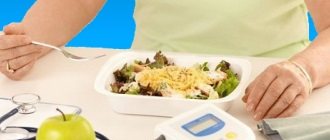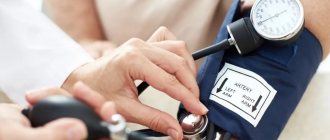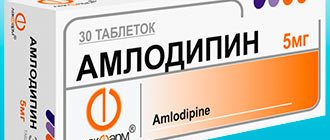Home — For the public
- Map of medical organizations
- Vaccination
- Clinical examination
- Fluorography
- Addresses and opening hours of clinics
- Emergency rooms
- Oncology
- Where to take an HIV test
- Healthy child's office
- Services
- Prevention of CVD
- Disease Prevention
- World Patient Safety Day
- Newspaper "Medical News"
- specialist
- School of Health
— Disease prevention
- HIV infection
- All about vaccination
- All about proper nutrition
- Hepatitis
- Flu
- Dementia
- Schoolchildren's health
- STD
- Tick-borne encephalitis
- Whooping cough
- Measles
- Legionellosis
- Meningococcal infection
- Oncology
- Acute intestinal infection
- Pediculosis
- First aid
- Pneumococcal infection
- Pneumonia
- Prevention of rabies
- Dependency Prevention
- Rotavirus infection
- Diabetes
- Cardiovascular diseases
- Injuries
- Tuberculosis
- Tularemia
- Physical activity
- Obstructive pulmonary disease
- Exotic infections
- Ecology
- Why is swimming in ponds dangerous?
— Cardiovascular diseases — Excess weight and a sedentary lifestyle as risk factors for CVD
The spread of cardiovascular diseases (CVD) among the population of most countries of the world has become an epidemic since the second half of the 20th century. Mortality from CVDs: coronary heart disease, stroke, peripheral vascular diseases affected by atherosclerosis is in first place.
WHO experts cite an unhealthy lifestyle, poor diet, low physical activity, and obesity as the main reasons that directly or indirectly influence the increase in the incidence of cardiovascular diseases in society.
The effect of excess weight on blood pressure
Obesity is a serious problem that causes a number of consequences and complications.
Extra pounds of the body strain the heart muscle and blood vessels. This increased work rhythm contributes to the development of atherosclerosis, arrhythmia, angina pectoris, myocardial infarction, coronary heart disease and hypertension. Many studies have proven that excess weight and blood pressure have a clear causal relationship. For many people who are overweight, high blood pressure becomes the norm. With obesity, blood pressure levels increase 3-4 times more often.
Problems with excess weight and blood pressure are clearly related. Even 5-10 extra pounds can help increase normal levels. But how do you know if you are overweight? There is a body mass index formula for this.
Body mass index is an ideal calculation of weight that does not interfere with any body functions. To calculate, you need to make a calculation using the formula:
Example: if the weight is 60 kg and the height is 1.70 m, the BMI will look like this - 60: (1.7 * 1.7) = 20.7.
A normal body mass index is considered to be between 20 and 25. If the index exceeds 25, it means you are overweight, and 30 is an indicator of obesity.
If you have extra pounds, it is enough to regularly arrange fasting days once a week. You can choose a product for unloading the body yourself, but it is important that it does not allow the body to become depleted and saturates it with vitamins and minerals that are necessary for the normal functioning of the body. Kefir, cottage cheese, beets, and buckwheat are best suited.
The presence of excess weight indicates poor nutrition, low physical activity, and cholesterol accumulation, which contributes to the development of hypertension.
- If you carry extra pounds, the load on the heart increases and it works at an increased rate. This leads to disruption of normal blood flow and increased blood pressure.
- Most often, obese people consume fatty foods and fast food every day, which can cause hypertension.
- The presence of excess weight indicates a high consumption of bad cholesterol, which contributes to the development of atherosclerosis (the accumulation of cholesterol deposits on the walls of blood vessels). They narrow the lumen and make it harder for the blood to flow, which over time causes hypertension.
There is no specific statement that excess weight causes hypertension. The reason for the increase in blood pressure is the above factors, which accompany both obesity and the occurrence of hypertension. Therefore, to reduce the risk of developing the disease, it is necessary to fight excess weight.
Upper limits of blood pressure during CST
As mentioned above, characteristics of an individual's phenotype influence the maximum SBP obtained in CST. In a large group of healthy individuals, maximum SBP was higher in men than in women, and higher in older adults than in younger adults (Figure 3) (43). Also, maximum SBP is higher in trained individuals than in their sedentary counterparts (23, 44), in hypertensive individuals than in normotensive individuals (25, 26), and in individuals with reduced baroreflex sensitivity (27). The ACSM and AHA recommend discontinuing CST for SBP and DBP levels greater than 250 and 115 mmHg. Art., respectively (3, 45). This criterion has not changed for decades (46), since the study presented in Fig. 1 (4), where the authors recommended without justification: “... Stress testing should be completed if SBP exceeds 250 mm Hg. Art." Similarly, the basis for the DBP criterion and the relationship of these upper BP values with an increase in negative events during physical activity are unknown (19).
Rice. 3. Maximum values of systolic blood pressure (SBP; a) and diastolic blood pressure (DBP; b) obtained in the Bruce treadmill test in men (black circles) and women (gray squares).
Mean ± SD are presented for each decade of life. The corresponding black and gray lines below and above represent the 10th and 90th percentiles for men and women, respectively. Figures use data from Daida et al (43).
Widely accepted upper values for stopping CST are based on data from a small sample of men of unknown age. Therefore, applicability across different populations is limited. Extreme increase in SBP and DBP, exceeding 320 and 250 mm Hg. Art. accordingly, was observed in healthy men during double leg presses (47). In contrast to aerobic exercise, resistance exercise secondarily increases intra-aortic pressure from straining while the glottis is closed, and this slightly reduces the increase in transmural pressure (48). There is no direct evidence that exercise increases the risk of adverse outcomes in people with hypertension (49), but this does not exclude the possibility of an adverse event from increased BP during exercise (eg, coronary or aortic dissection, cerebral hemorrhagic events). However, increased BP with exercise is transient and returns to baseline values or less after cessation of exercise (50, 51). Adherence to current CST discontinuation criteria based solely on maximal BP is a cautionary rather than an evidence-based recommendation.
Dangers
Obesity is a serious disease that is a disruption of metabolic processes. Excess weight reduces life expectancy.
In hypertension, the fight against fat deposits is included in both treatment and prevention. And this should be taken very seriously, since excess weight in combination with hypertension can cause significant harm to the body.
- With an unhealthy diet, the body receives a lot of high-calorie foods containing large amounts of cholesterol. Its excess in the blood begins to accumulate on the walls of blood vessels and harden over time. This process leads to the formation of cholesterol plaques, which do not allow the blood to move in a normal working rhythm. And the pressure tends to rise at this moment. Also, the vessels lose their elasticity and become very fragile.
- There is a high risk of blood clots that block blood flow, causing severe hypertension and the possibility of developing a hypertensive crisis.
- Atherosclerotic plaques can block coronary arteries, causing a stroke.
Such complications can occur with elevated levels of cholesterol, which enters the body with fatty and high-calorie foods. In combination with insufficient physical activity, smoking, and alcohol consumption, heart overload can occur, which contributes to the development of myocardial infarction.
Basic rules for reducing high blood pressure
Experts advise starting consistent weight loss when there is a problem with high blood pressure due to the presence of extra pounds. With a loss of 5 kg, the pressure drops by 3 mm, with a loss of 10 kg the figure drops by 7 mm, which has a positive effect on a person’s overall well-being.
The main rule of losing weight is no rush, the kilograms should go away gradually. Losing weight too quickly is associated with complications in the body's functioning, including hormonal imbalance and metabolic failure. Such consequences of wrong actions are difficult to correct. The body can react in the opposite way to stress. Instead of losing weight, your excess weight will increase and your body will accumulate pounds as a reserve.
Nutritionists and doctors recommend achieving weight loss of no more than 10% from the original level within 6 months. Patients with hypertension should not adhere to strict diets, but strive for a balanced diet that provides the body with calories, the amount of which is slightly reduced compared to the daily norm. In the process of losing weight, the following rules should be followed:
- eat a limited diet, including cholesterol-free foods;
- the number of calories consumed during the day should not exceed the number of calories consumed;
- eat small portions, 6 to 8 times a day;
- Changes in diet should be accompanied by physical activity.
During the day, a person should drink at least 3 liters of liquids per day to lose weight.
Obesity, hypertension and kidneys
Obese patients with hypertension experience increased renal sodium absorption and increased blood volume. This may be due to an activated sympathetic nervous system or renin-angiotensin system and high pressure in the kidney.
ONLINE REGISTRATION at the DIANA clinic
You can sign up by calling the toll-free phone number 8-800-707-15-60 or filling out the contact form. In this case, we will contact you ourselves.
If you find an error, please select a piece of text and press Ctrl+Enter
Obesity and high blood pressure
The content of the article
Research has shown that the rise in people suffering from high blood pressure is seen in conjunction with a sharp increase in the prevalence of overweight and obesity. According to the International Obesity Task Force, at least 1.1 billion adults are currently overweight, including 312 million who are obese.
Similar trends are observed in the United States and Europe. For example, in England, 66% of men and 55% of women are overweight or obese.
When should action be taken?
The more weight a person has, the more seriously the internal organs are deformed, the more time it takes for treatment and recovery. If obesity of types 1 and 2 can be helped by diets and recommendations chosen by the attending physician, moderate physical activity, and treatment of concomitant diseases caused by obesity, then obesity of degrees 3 and 4 often requires surgical intervention. Today, gastric surgeries such as gastric banding, gastric bypass, and gastroplasty are very popular. To avoid resorting to such radical methods, you should start treating the disease at earlier stages. Among other things, there are many folk remedies that supposedly help in the fight against obesity, for example, taking activated carbon, soda or vinegar, as well as the method of treating obesity with leeches or acupuncture. But are these methods safe and effective? If you have already tried all the ways to lose weight and are almost desperate, then there is another win-win option - obesity coding. Obesity coding does not mean that after the session you will be able to eat as much as you want and you will not gain weight. After one hypnosis session conducted by a professional psychotherapist, you yourself will refuse to eat, you will not have such a strong appetite as before. Food will no longer be the center of your attention, you will notice other delights of this world. If you still have doubts, then find out more about the method of coding for excess weight.
Sample menu for high blood pressure
The daily menu consists of the standard breakfast, dinner and dinner. A small light snack in the form of fruit or salad is allowed between each main meal. Composition of the daily menu:
- Breakfast - ¾ glasses of cereal, a glass of full-fat milk, a piece of whole wheat bread, 200 g of orange juice;
- Dinner - a salad of fresh vegetables, skinny boiled chicken, no more than 200 g of bacon or vegetable soup;
- 60 grams of lean beef, beans with vegetable oil, 1 potato, 1 apple, 200 grams of non-fat milk.
The digestive dose should not exceed the daily calorie standard. When cooking, avoid frying with oil. It is recommended to prepare dishes by stewing or cooking, which will reduce high-calorie dishes and retain more vitamins and nutrients in food.










